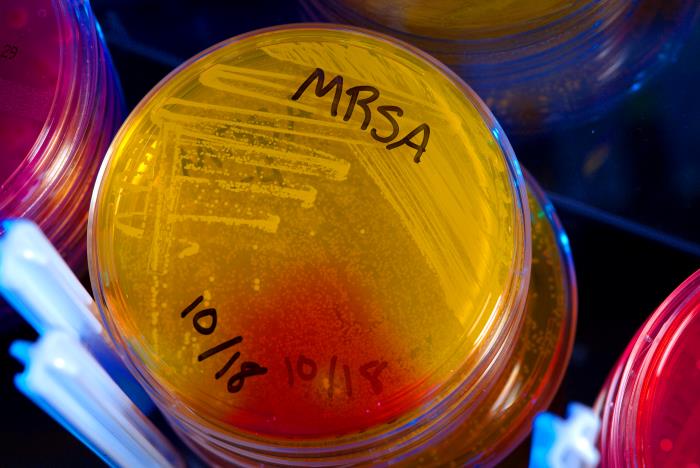New research finds how ‘superbugs’ build their defences
 Scientists at the University of East Anglia are getting closer to solving the problem of antibiotic resistance. New research published today in the journal Nature reveals the mechanism by which drug-resistant bacterial cells maintain a defensive barrier.
Scientists at the University of East Anglia are getting closer to solving the problem of antibiotic resistance. New research published today in the journal Nature reveals the mechanism by which drug-resistant bacterial cells maintain a defensive barrier.
The findings pave the way for a new wave of drugs that kill superbugs by bringing down their defensive walls rather than attacking the bacteria itself. It means that in future, bacteria may not develop drug-resistance at all.
The team, supported by the Wellcome Trust, used Diamond Light Source, one of the world’s most advanced scientific machines, to investigate a class of bacteria called ‘Gram-negative bacteria’.
Gram-negative bacteria is particularly resistant to antibiotics because of its cells’ impermeable lipid-based outer membrane. The research team previously found an ‘Achilles heel’ in this defensive barrier. But exactly how this defensive cell wall is built and maintained – the ‘assembly machinery’ – was unknown until now.
Lead researcher Prof Changjiang Dong, from UEA’s Norwich Medical School, said: “All Gram-negative bacteria have a defensive cell wall. Beta-barrel proteins form the gates of the cell wall for importing nutrition and secreting important biological molecules. The beta-barrel assembly machinery (BAM) is responsible for building the gates (beta-barrel proteins) in the cell wall. Stopping the beta-barrel assembly machine from building the gates in the cell wall cause the bacteria to die.”
Scientists studied the gram-negative bacteria E.coli, in which the beta-barrel assembly machinery contains five subunits – known as BamA, BamB, BamC, BamD and BamE. They wanted to know exactly how these subunits work together to insert the outer membrane proteins into the outer membrane or cell wall.
Prof Dong said: “Our research shows the whole beta-barrel assembly machinery structures in two states – the starting and finishing states. We found that the five subunits form a ring structure and work together to perform outer membrane protein insertion using a novel rotation and insertion mechanism.
“Our work is the first to show the entire BAM complex. It paves the way for developing new-generation drugs.
“The beta-barrel assembly machinery is absolutely essential for Gram-negative bacteria to survive. The subunit BamA is located in the outer membrane and exposed to the outer side of the bacteria, which provides a great target for new drugs.”
Read the full media article on Phys.org
Read another media article on The Washington Post.com
Read the full journal article in Nature.com
